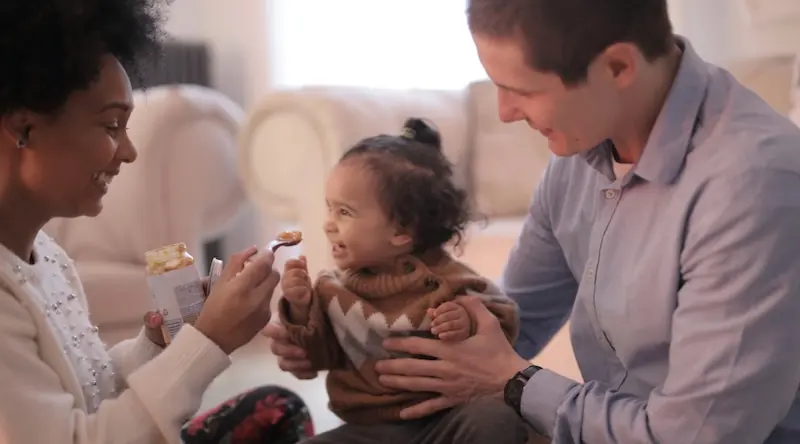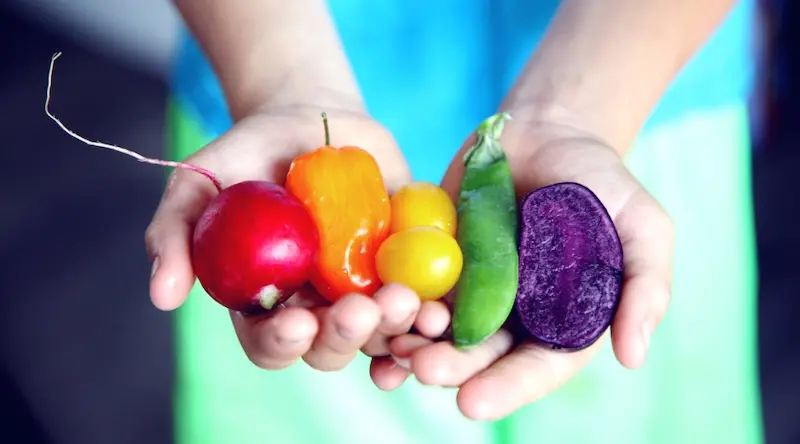settings
children
With Famly since
Our attitudes toward food stem from our cultural influences, our traditions and our childhood environments. In the past, parents had to cope with food scarcity, and worked hard to put food on the table. But today, we’ve got an abundance of food — and as a consequence, our perceptions of a healthy weight have changed.
Parents of overweight and obese children often believe that that their child is the right weight. A 2017 study found that in the case of overweight children, a vast majority of their parents (90% of mothers and 87% of fathers) described them as being about the right weight. Around half of the parents of obese children (47% of mothers and 52% of fathers) also said their child was a healthy weight.
Teaching children healthy eating habits starts with rethinking our own perceptions, and in children’s early years. In our roles as parents, caregivers and educators, we need to be cautious about how we shape children’s relationships to food.
Less is More
In a 2016 study called ‘Feeding Infants and Toddlers’, food diaries demonstrated that children who ate less frequently during the day consumed larger than average portion sizes — and children who ate more often consumed smaller than average portion sizes. This suggests that even from a young age, children can regulate their own consumption habits.
If young children can regulate their own energy intake, why are they often overweight? From my own research and experience, I believe this comes down to three key factors:
- Children are being given too much food for their age. The Journal of the Academy of Nutrition and Dietetics reported that average energy intakes exceeded the estimated energy requirements by 10% for infants 4 to 6 months, 23% for infants 7 to 12 months, and 31% for toddlers 12 to 24 months.
- Food choice can also be blamed. Our society has moved away from fresh produce and often fast food or ready meals are preferred. The most popular foods nowadays are energy dense but nutrient poor, causing weight gain but no benefit to the child’s health.
- Another worrying trend is the tendency for parents to offer children fizzy drinks and fruit juice instead of water. Children who consume drinks containing lots of sugar have a higher risk of being overweight.
It’s natural to worry about how much the children at your setting eat, and it’s tempting to encourage them to eat more food if you believe they are not eating enough to grow. However, we see that children can regulate their own energy consumption from an early age — so too much interference can damage a child’s healthy growth.

Getting the whole family involved
Whether you are a parent, grandparent, EY professional or teacher, children look up to us and follow by example. They naturally copy adults’ behaviour in their process of growth, so it’s crucial that we make the most of this time to encourage good eating habits.
This puts a lot of responsibility on all of us adults. It may seem impossible to be on your best behaviour all the time, especially as a practitioner or parent, but trying not to eat unhealthy foods or snack when children are in the vicinity will encourage healthier eating habits.
There are simple changes you can make at home which will make a big difference — and eating meals together as a family is one of the most important. According to an American study from 2007, only 55% of married parents and 47% of single parents eat breakfast daily with their preschool-aged child.
Eating as a family at home during mealtimes helps a child discover new foods, and creates quality time for them to voice any stresses or concerns — especially about food. All this creates a warm, social experience for children, reinforcing their positive ideas of meals and food.
How you can help at your Early Years setting
Sometimes it’s too difficult for parents to change their children’s eating habits alone. This is where your Early Years setting can act as a guiding light for parents in enacting a healthy diet, as you can help encourage children to eat nutritious diets and avoid too many sweet drinks. But in many cases, this brings challenges of its own, as parents might worry their child will not eat the food options that are offered at your child care setting.
It’s vital that Early Years settings have a strong and professional relationship with the parents, though this is often easier said than done. Food can be a sensitive subject, and parents can get defensive about their way of doing things, especially as they have left their children in the care of others and changes take place in their absence.
If you run into this issue, it’s best to focus on working with parents, rather than combatting them or insisting your way is right. After all, parents still have the final say over their children’s diets, so you need to keep things cooperative. Try informing parents about any updates or progress with childrens’ eating habits at your setting, and do all you can to keep things consistent between your setting and the children’s home.

Taking action on healthy habits
There are all sorts of ways that Early Years settings can communicate with parents, from food diaries to WhatsApp messages and sharing pictures showing what the children are eating and drinking.
Let’s get into some of the methods that practitioners and educators use to build these relationships with parents.
Eating Their Greens
A common issue in Early Years settings is parents’ misconceptions that their children don’t like certain foods, especially fruit and vegetables. This can be frustrating for Early Years workers, because often the child has no problem with these foods at all.
To overcome this challenge, one Early Years worker told me that they created a WhatsApp group for parents which showcased the food that the children had been eating throughout the day. The most popular thread with the parents was ‘colourful snacks,’ which demonstrated the children trying different fruit and vegetables throughout the day.
You could also try keeping track of which children are eating what throughout the day and showing this report to the parents later.
Parents are often surprised to see their children enjoying certain foods. Maintaining communication and displaying clearly what happens in the child’s day at nursery is therefore a powerful tool for establishing a healthy relationship between Early Years and home settings.
Keeping in Touch
Sharing information with parents is very effective, whether digitally or in person. Coffee mornings between your setting’s staff and parents can be a great personal way for parents to put forward any queries or concerns in a welcoming space. In COVID-19 times, online forums and chats are a good alternative. As well as parents talking to Early Years staff, it’s helpful for parents to communicate with each other for ideas too.
Your Early Years setting could share food diaries with parents to give them ideas of what kinds of meals the children have eaten. This allows parents to see what children have enjoyed, so they can replicate it at home.
Managing Portion Sizes
Another common occurrence is for parents to give their children packed lunches containing far too much food, because they are worried about their child going hungry.
One Early Years professional told me that she would send the parents the leftovers from lunch to show how little the child actually needs to eat.
Again, this can be a difficult and contentious topic. Childcare providers don’t have control over what goes into the children’s packed lunches. The best way to tackle this problem is communication with parents. For example, you could organise a fun healthy eating day for children and parents, or set guidance on packed lunches and advertise this through leaflets or a welcome pack.

Stick to water
Speaking with an Early Years professional, I learned that one of the most significant challenges faced in many settings is encouraging children to drink water.
Water is such an important factor in a child’s growth. Children don’t always know when they are dehydrated, and regular rehydration enables them to regulate their body temperature. Milk is also an option for young children, as it provides calcium, protein and vitamins and minerals helpful for growth.
The Oral Health Foundation suggests that children under 5 should only drink water and milk. Water and milk contain everything necessary for a child’s healthy development without the sugars and calories in fruit juice and fizzy drinks, which can cause harm to children’s teeth and general health. If possible, childcare providers should take the time to explain to parents with newborns the importance of water in the diet and discourage any other forms of fluid apart from milk.
The reason that children don’t drink water often comes down to the attitude of the parents, rather than the children’s own refusal. Make sure you explain to parents that in your Early Years setting, there is no other choice but water to drink, and that their children will drink water even if they don’t drink it at home.
To help children drink water:
- Get them involved — make ice cubes together and serve iced water. Ice cube trays can come in all sorts of sizes and moulds that are fun for children, and you can add the ice cubes to their cups or drink bottles. Children could also make ice cubes with pieces of fresh fruit frozen inside.
- Make sure each child has their own water bottle
- Encourage children to try a new fruit, and add a slice or two of this to their drink.
Writing your healthy eating success story
Raising a healthy child is a challenge in today’s society: there are so many temptations, and we often overcompensate on food portions and choose the wrong types of food. Introducing nutritious food to children can seem impossible for parents.
For this reason, Early Years settings and parents need to team up. Whilst it may be challenging for early years professionals and parents to see eye to eye on every detail, with a few thoughtful changes early years professionals can show parents that a healthier diet is possible for their children, and there will be great rewards from this practice.
Sarah Scotland is a freelance nutritionist and owner of Wise About Food, a community interest group which offers bespoke nutrition advice and cooking tutorials to various groups in the UK. Find out more at https://www.wiseaboutfood.co.uk/.
The big ideas
Get 1000s of free EY activities
Want over 7,000 activities? See them in a free 14-day trial. Filter to target learning areas, age groups and topics, and get inspired.
Get started









